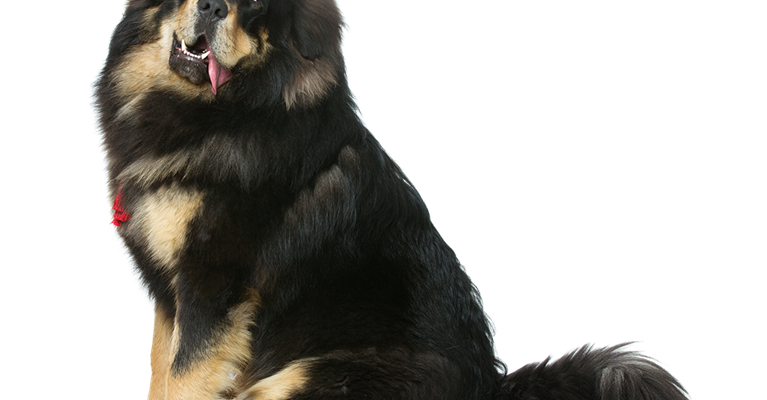Cocker Spaniel
17 Oct 2023Read our comprehensive guide to Cocker Spaniels, including information on predisposed health issues, exercise needs, family friendliness, grooming, history, overview & temperament.
Read our comprehensive guide to the Tibetan Mastiff, including information on predisposed health issues, exercise needs, family friendliness, grooming, history, overview & temperament.

As the name suggests, Tibetan Mastiffs originated in Tibet. There is little documented history of the breed before the late 19th century, but DNA evidence suggest they originated in Tibet around 5,000 years ago.
The first dog from Tibet was imported to England in 1847 and was given to Queen Victoria as a gift, and in 1873, England’s Kennel Club was formed, and the Tibetan Mastiff was officially registered. After this, the Tibetan Mastiff continued to be imported into England and Europe, leading to the first Tibetan Mastiff breed club which was formed in 1931.
Like so many other purebred dogs, Tibetan Mastiffs are likely to suffer from certain health related issues and conditions, including:
Tibetan Mastiffs have very thick fur especially around their heads, which often looks like a lion’s mane. They are heavy shedders and shed their coat once a year between spring and summer, so they will need their hair brushing more frequently over those months. Other times of they year the shedding will be less and so brushing a few times a week is enough during these times. Don’t be alarmed if your Tibetan Mastiffs fur starts coming out in clumps around the time they are due to shed their whole coat, as this is perfectly normal for them. However, if you are concerned about them, you can take them to a vet to be on the safe side.
Tibetan Mastiffs will require frequent bathing too – every six weeks depending on their environment and how dirty they get. Bathing them – and drying them for that matter – is no easy task due to their thick coats, so be sure you’re prepared!
Tibetan Mastiffs require at least an hour of exercise a day – and you’ll find that sometimes they are happy for more. They are big dogs who need lots of physical stimulation to stay happy and healthy, and love being active with their owners. They require larger homes with big gardens, so they have plenty of space to play around in.
Their hour of exercise can be split into two or three walks with some dedicated play times. Plus, they need lots of mental stimulation too and enjoy playing puzzles and taking part in training sessions.
| Key Facts Summary |
|---|
| Size: |
| 9-15 inches |
| Weight: |
| 3kg 8.5kg |
| Temperament: |
| Playful, Friendly and Affectionate |
| Lifespan |
| 12-15 Years |
| Average Cost: |
| £750-£1500 |
Tibetan Mastiffs are banned in many cities across the world due to safety reasons, but they are perfectly legal to own in the UK.
Tibetan Mastiffs are very friendly, loyal, and loving pets that make for great family pets; however, you may need to keep an eye on them around children. Whilst they generally do well with kids if they have been raised with them, they may mistake crying and screaming as signs of aggression and become defensive. They are not generally recommended as pets for families with younger children.
Because of their rarity and the purity of their bloodline, Tibetan Mastiffs are actually one of the most expensive dog breeds in the world. They are large dogs that were originally guard dogs trained to protect livestock and are now a notoriously pricey breed.
Tibetan Mastiffs have a loud and powerful bark which can catch you off guard, but they only really bark if they notice a threat, want to make you aware of something or get your attention.
Tibetan Mastiffs are generally not recommended for a timid or first-time owners – they require experienced, confident owners who can train them well. They are quite strong-willed and territorial dogs, so they are not suited for beginner dog owners.
Read our comprehensive guide to Cocker Spaniels, including information on predisposed health issues, exercise needs, family friendliness, grooming, history, overview & temperament.
Read our comprehensive guide to the Cavapoo breed, including information on predisposed health issues, exercise needs, family friendliness, grooming, history, overview & temperament.
Read our comprehensive guide to the Bichon Frise breed, including information on predisposed health issues, exercise needs, family friendliness, grooming, history, overview & temperament.
Known for putting value for money at the centre of everything we do
You can choose your policy cover as well as your excess terms, so you can get the cover your pet needs at a price that suits you
An insurance offer that suits you and your individual circumstances
Asda Pet Insurance is arranged and administered by Insurance Factory Limited. Insurance Factory Limited is authorised and regulated by the Financial Conduct Authority. (No. 306164). Registered in England and Wales Number 02982445. Registered Office: Markerstudy House, 45 Westerham Road, Bessels Green, Sevenoaks, Kent, TN13 2QB. You can check this by visiting the Financial Services Register at https://www.fca.org.uk/register


